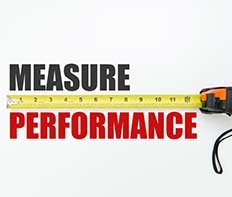Common Rating Scenarios, Tips and Techniques

When completing your employee performance reviews you may come across some tricky scenarios, the following are common
- he whole team is below target
- The measure is intangible
- A new employee is still learning
The whole team is below target
If you have set a target and you find that everyone in your business is behind that target you have to determine if the target was fair. You will need to find out why the team is not meeting the target. If the team is working hard and the target is too high then you may need to rethink your target. If the team is really just a poor performing team then what has the manager been doing?
When the individual’s performance is related to paying bonuses and the bonus is linked to pre determined performance targets, managers are often reluctant to change the targets. However, someone can miss their goals that relate to their bonus but can still be rated as a good performer related to team performance. The best performer in your team should not be rated as a poor performer.
One thing that you can do in this case is to calculate the average performance in your team, then determine where each of your people fit, they are either below average, slightly above average or well above average.
The Measure is Intangible
Many managers insist on all measures being tangible or easy to measure as tangible measures are not as subject to bias or interpretation as intangible measures.
However, well-managed intangible goals can result in significant increases in employee performance. So, how do you do it?
Each month you have a frank and honest discussion with your employee about how you see their performance, including how you would currently rate your employee’s performance and why, this is a two-way conversation where you are open to influence. The conversation concludes with you advising the employee what you would need to see from them to increase your view of their rating.
Do not shy away from using intangible measures. If you need to use them, then use them and enjoy the regular conversations with your team about their performance.
A new employee is still leaning
How do you rate new employees, they are often performing below performance targets, however they are not generally poor performers. Ideally you will have a policy that new employees cannot be rated until they have been in your team for a reasonable amount of time, hence new employee are not rated at all.
However, if you have to rate them there are two ways to look at this scenario and it depends on your organizations policies which way you go.
For the end of year performance appraisal you can either
- Assess the employee as meeting expectations, If they are on par with their current stage of development, or
- ou can note, employee is new and still learning therefor rating is not reasonable at this stage







